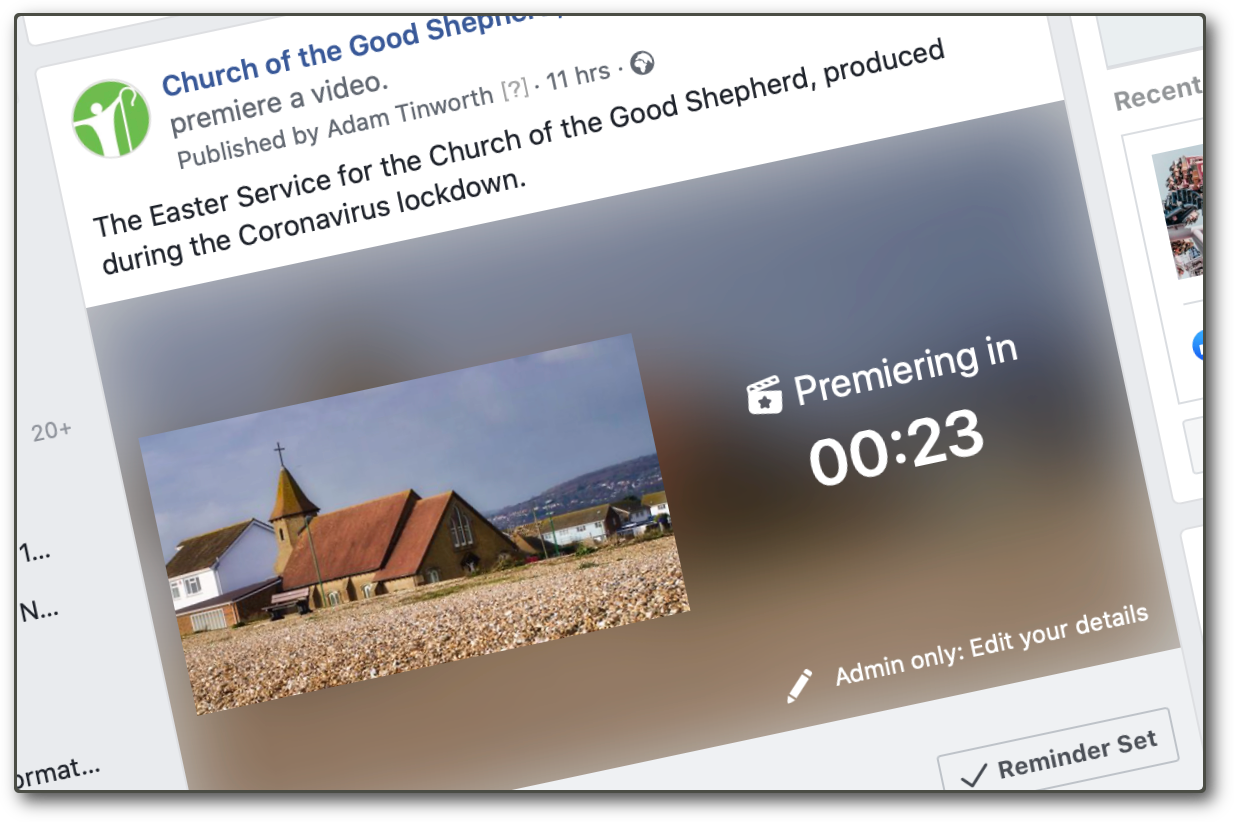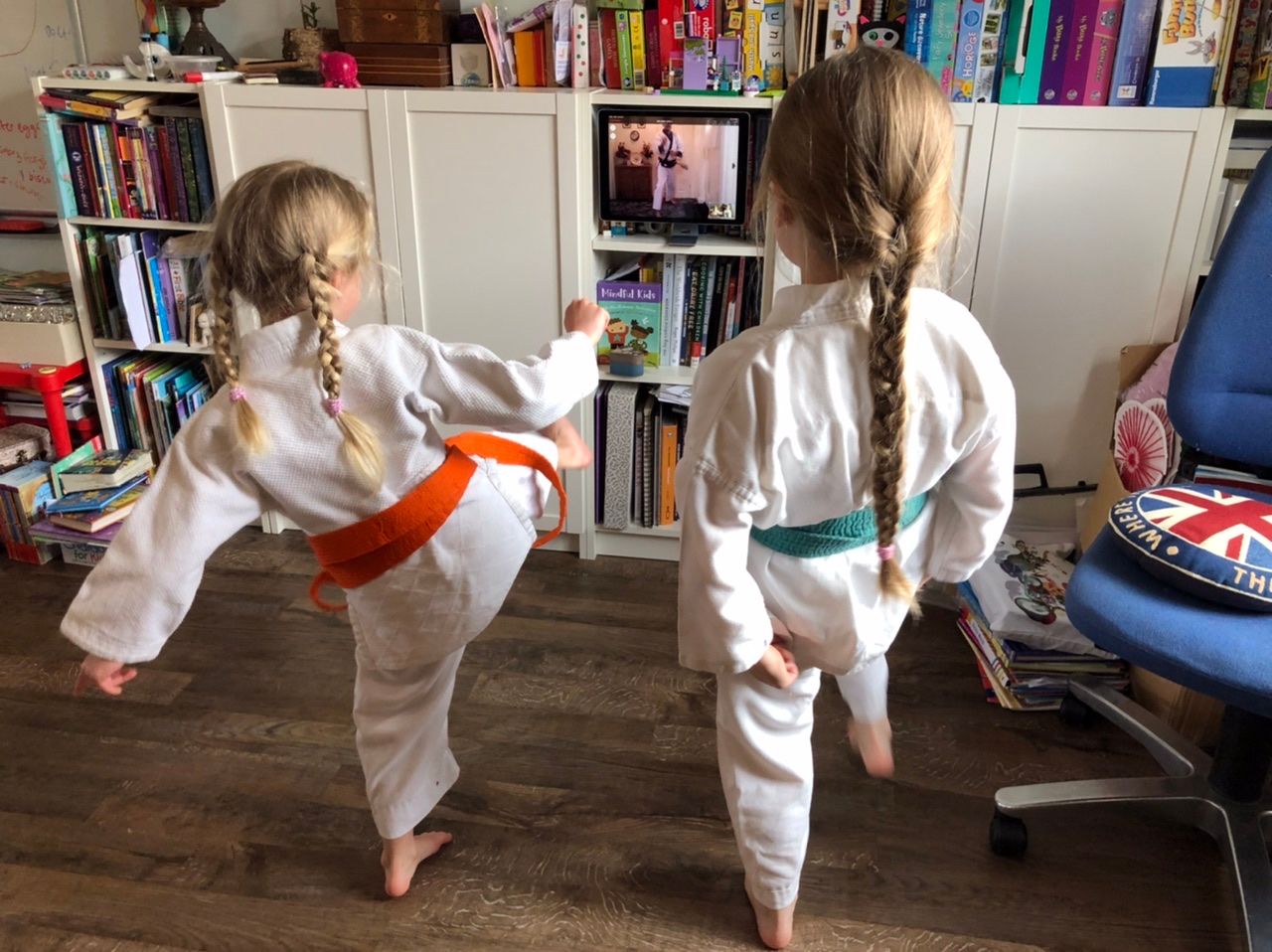To build a community online during a crisis, go live
I’ve long been a sceptic of Facebook Live and other tools. But perhaps I should have looked more closely. If you see them as a community tool, not a broadcast one, the potential is huge.

Here’s a confession: I was wrong about Facebook Live. I’ve always been deeply sceptical of it as a tool. Live video is an attention-demanding medium, and in an attention-poor age, that seems like a poor tool in most situations. It’s not time-efficient, and that makes it a highly situational tool, for situations where watching something in real time is part of the appeal. They, as any live broadcast producer from TV will tell you, are rare.
If you want evidence for that view, just take a look at the number of news organisations who built studios to deliver Facebook Live content a few years ago. How many of them are still using them today?
However, this situation we find ourselves in is not “most situations”, and all of a sudden, Facebook Live (and equivalent tools) are finding their place in the world. I was wrong, because I was viewing them through the wrong lens. And a canon on a mission has shown me the error of my ways.
Beyond broadcast, a canon and a community
These live-streaming services are not, in fact, broadcasting tools. That was my error. They are community tools, which allow a community to gather around a live event and, viewed through that light, they take on a new relevance. In fact, they don’t even have to be truly live. As long as they are streamed “as live”, you have a community experience you can build something around.
Let me explain. I have been roped into supporting my local church — The Church of the Good Shepherd on Shoreham Beach — provide services online. (It’s a runing joke locally that if you stand still for too long near Canon Ann, she’ll find you something to do. This appears to apply online, as well.)
I was glad to take it on, because I was aware how important it could be. Many of the congregation are in the older and more vulnerable age group to novel coronavirus infection, and are thus in long-term self-isolation. Some of them are in couples, but some are facing months inside on their own. Anything that brings them social contact helps ameliorate the negative mental health side-effects of that kind of social deprivation.
(In fact three of that congregation have already been hit with Covid-19, with two of them now successfully recovered.)
Going, Going Live

Up until now, I’ve been uploading pre-recorded videos from the clergy and members of the congregation, but one weekend I had the idea of uploading them as Premieres on both Facebook and YouTube. I mainly did this so the congregation would get notifications when it went live, but also because Revd Jane was doing a live dawn Eucharist from the vicarage overlooking the beach, and I thought we could create an event online for Easter.
I was not prepared for the impact. Congregation members started chatting, sharing greetings, coming together as a group for the first time since the doors of the church shut. And the emails of “thanks” made me wonder if this was one of the best uses of my time in recent memory.
Easter Sunday Eucharist at SunriseEaster Sunday Eucharist at Sunrise. Filmed on the balcony of the vicarage of the Church of the Good Shepherd, celebrated by Revd Jane Bartlett. Accompanied by a chorus of bird song!
Geplaatst door Church of the Good Shepherd, Shoreham Beach op Zaterdag 11 april 2020
However, one thing is clear - many local businesses are beginning to realise that their existence is predicated on having a genuine, engaged community around them. Quartz ran an interesting piece this morning about how it’s not just the big online players that are taking advantage of the shift to home work-outs, it’s much smaller gyms and clubs, too.
Digital Soo Bahk Do
For example, my daughters’ martial arts classes, run by the excellent Andy Scriven of Scriven Martial Arts, despite still a website that needs Flash, have switched to live sessions via Zoom during lockdown. Initially they went with YouTube videos, but without the focus of a set time to come together, it was less effective. The switch to the live format brought the community together.

Again, it’s not just about keeping the club alive, and my daughters' skills robust, it’s about community. The girls are able to say “hello” to their friends before and after the class, and to Master Andy and Master Bob, too. My youngest has known them her whole life - she used to come to my eldest's classes as a literal babe in arms. To remove that continuity would have made this strange time even stranger. But, instead, she’s able to maintain her relationship and the sense of community.
And we carry on paying Andy his monthly fees, because he's still providing us with classes. The form changes, but the business endures because the community endures.
We could stand to learn from that, couldn't we?
Use community cover to weather the crisis
One of the truisms of times of crisis is that everybody tends to take them as proof of whatever they believed anyway. And I might be culpable of that. But, as I alluded to in my last post, I think many communications and journalism businesses would do much better through this time by rethinking themselves as community-centric content and connection providers, rather than “publishers” in the traditional sense.
Community can, and does, develop asynchronously, of course. But synchronous moments of connection, where we talk in real time, and have the chance to share a social experience around something are a powerful force for binding a community together - and that community is more likely to support you with what you need, be it advertising or member revenue.
Find your live social object
In the old days of Web 2.0 we used to call things people gathered to discuss “social objects”. A church service can be a social object. A martial arts class, can, too. Even an old episode of Doctor Who, can be, as the on-going rewatches organised via Doctor Who Magazine’s writer Emily Cook have shown.
The easing of lockdown is approaching. That’s great. But it doesn’t mean that we should immediately just shift back to business as usual. One of the questions you could usefully ask yourself is: what’s the social object your community could gather around? And how can you use that to grow that community, starting today?
Answer that question, and you’re one step closer to having a community, not an audience.





